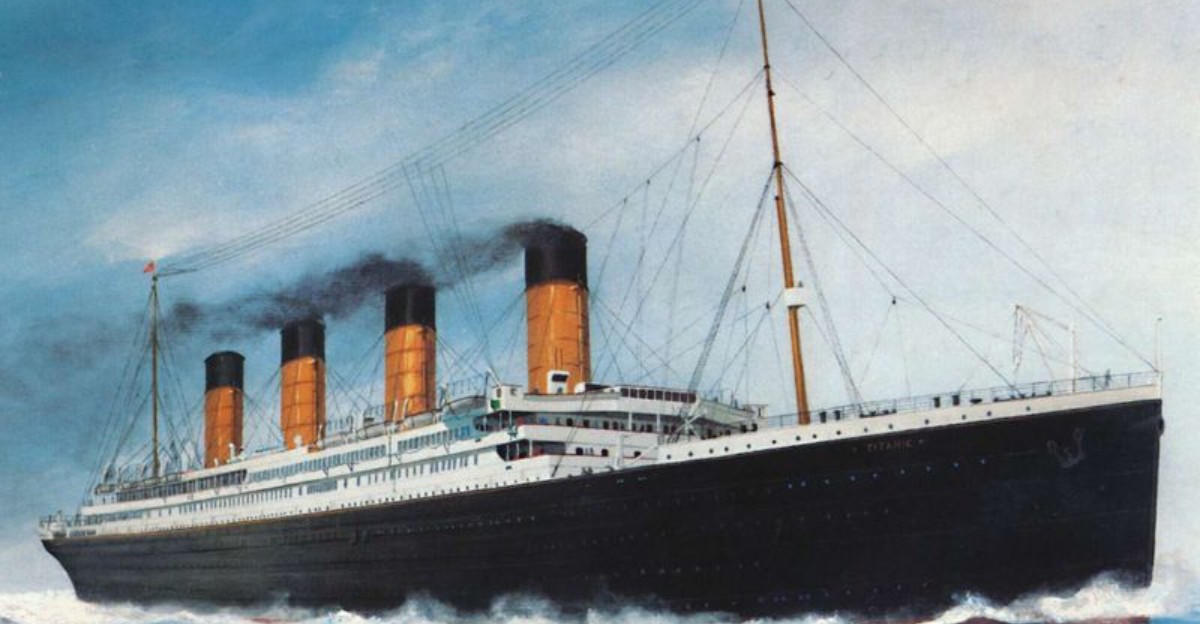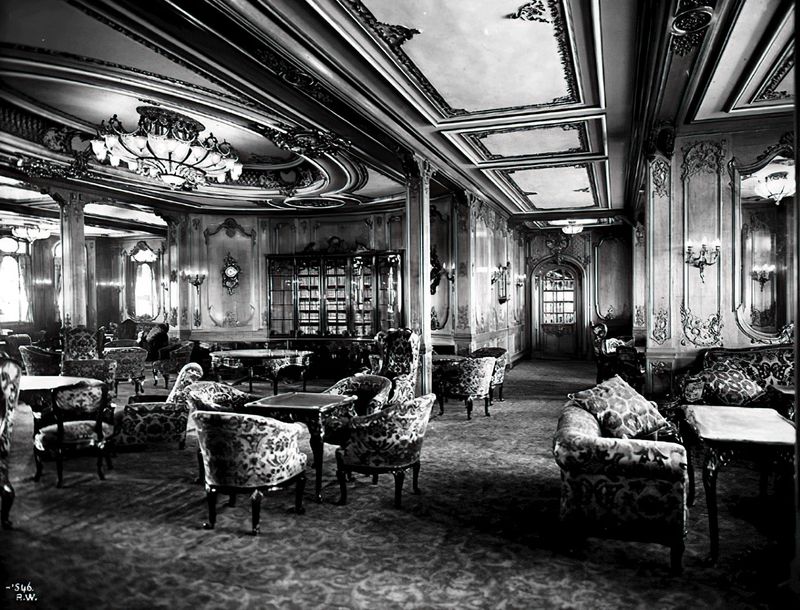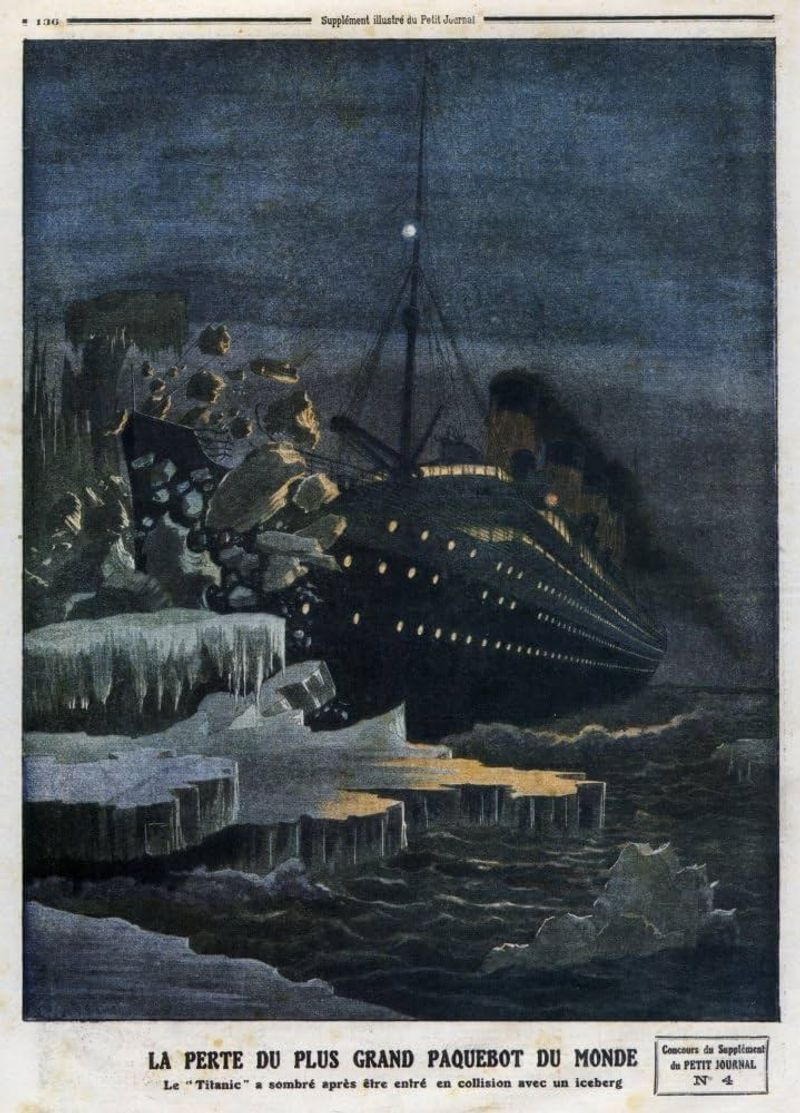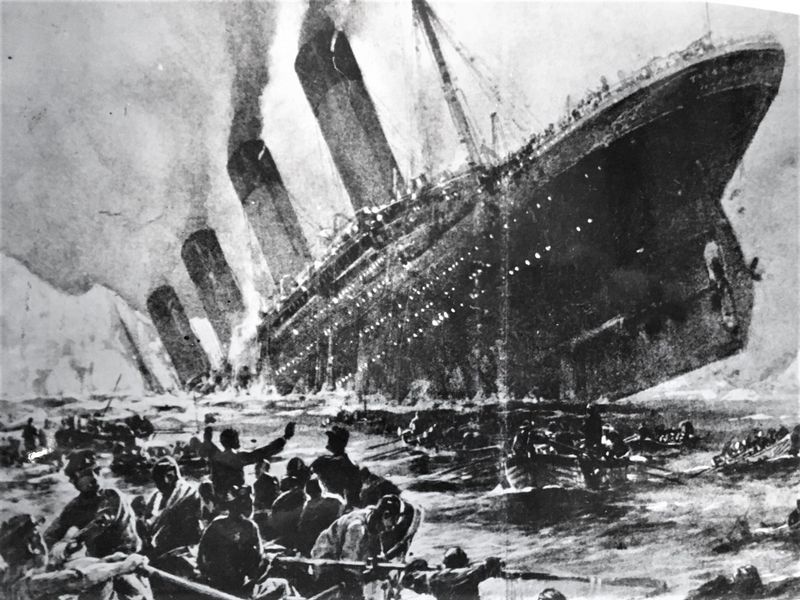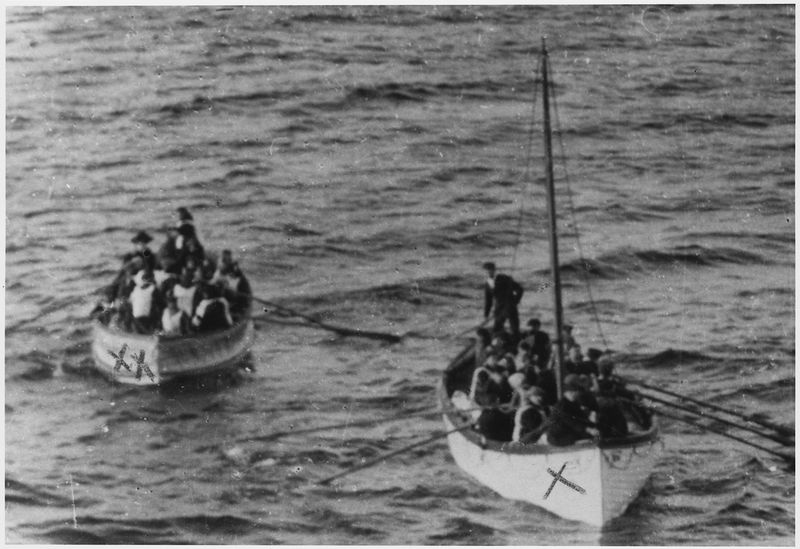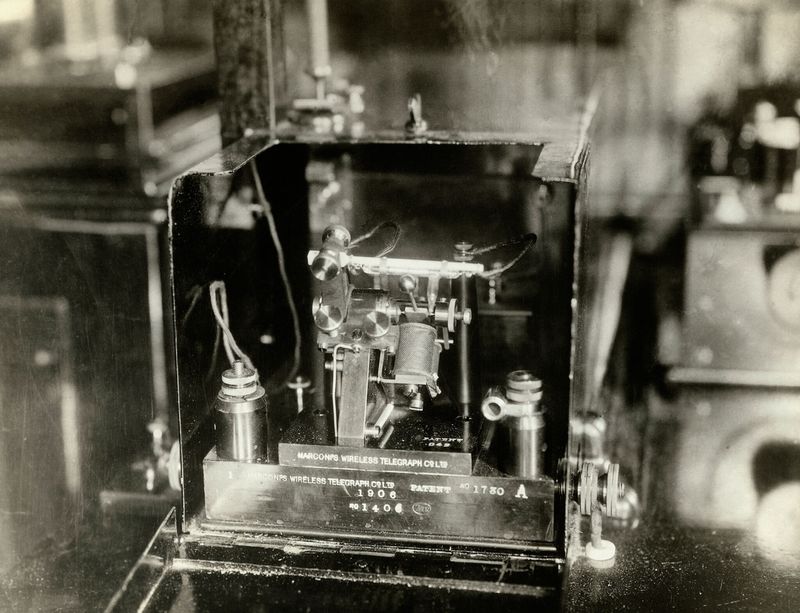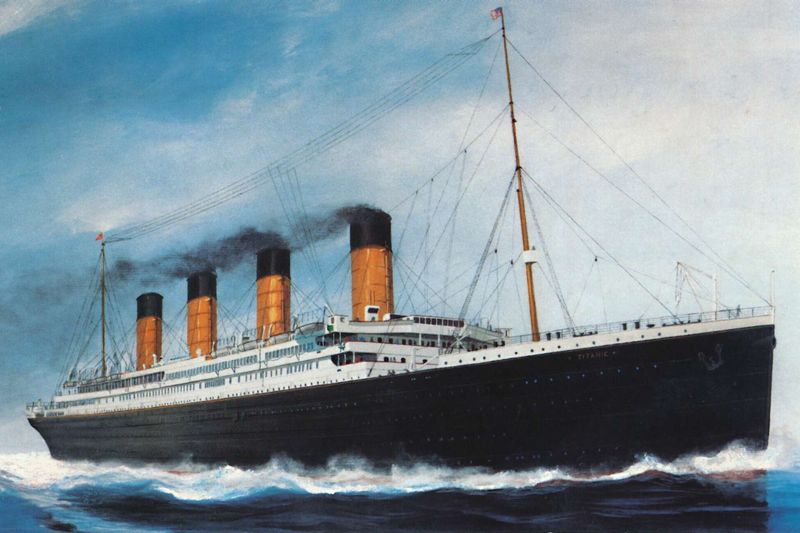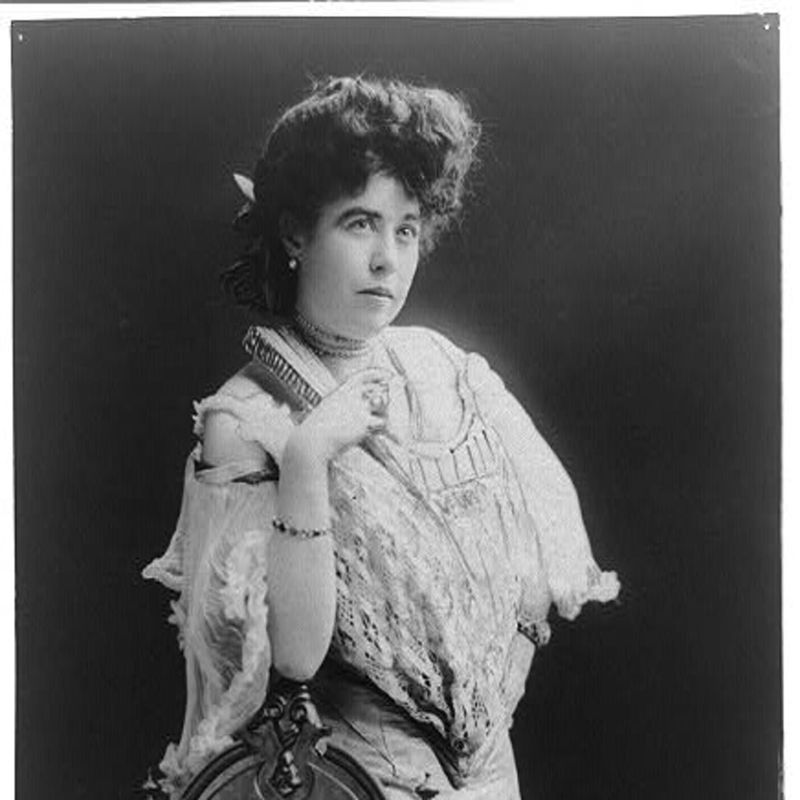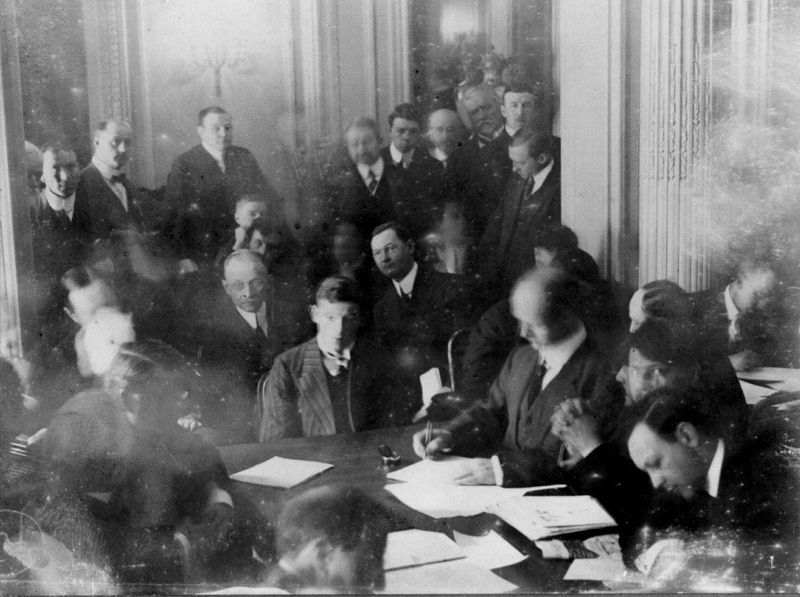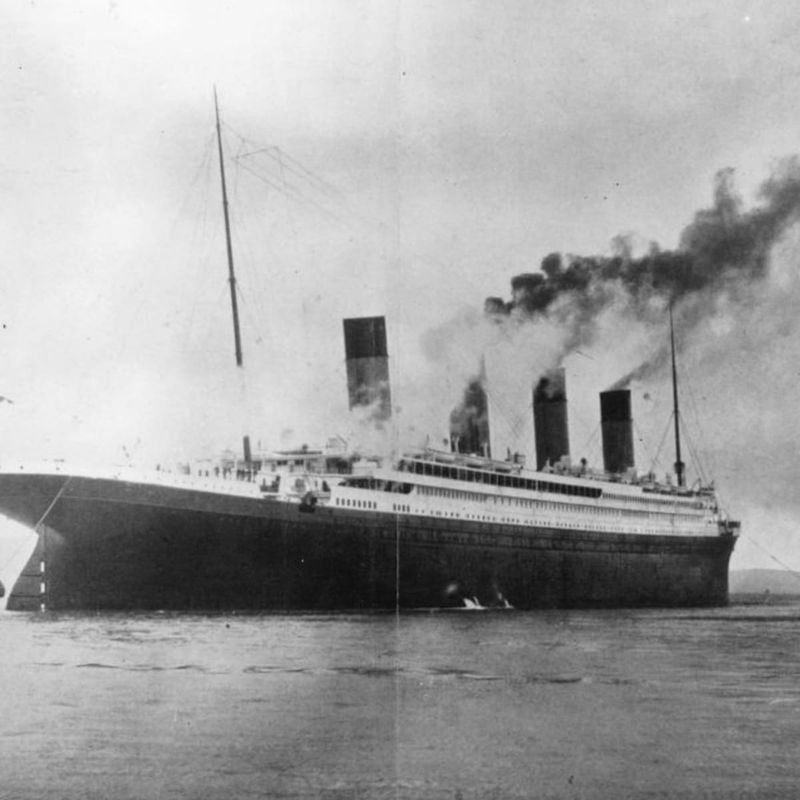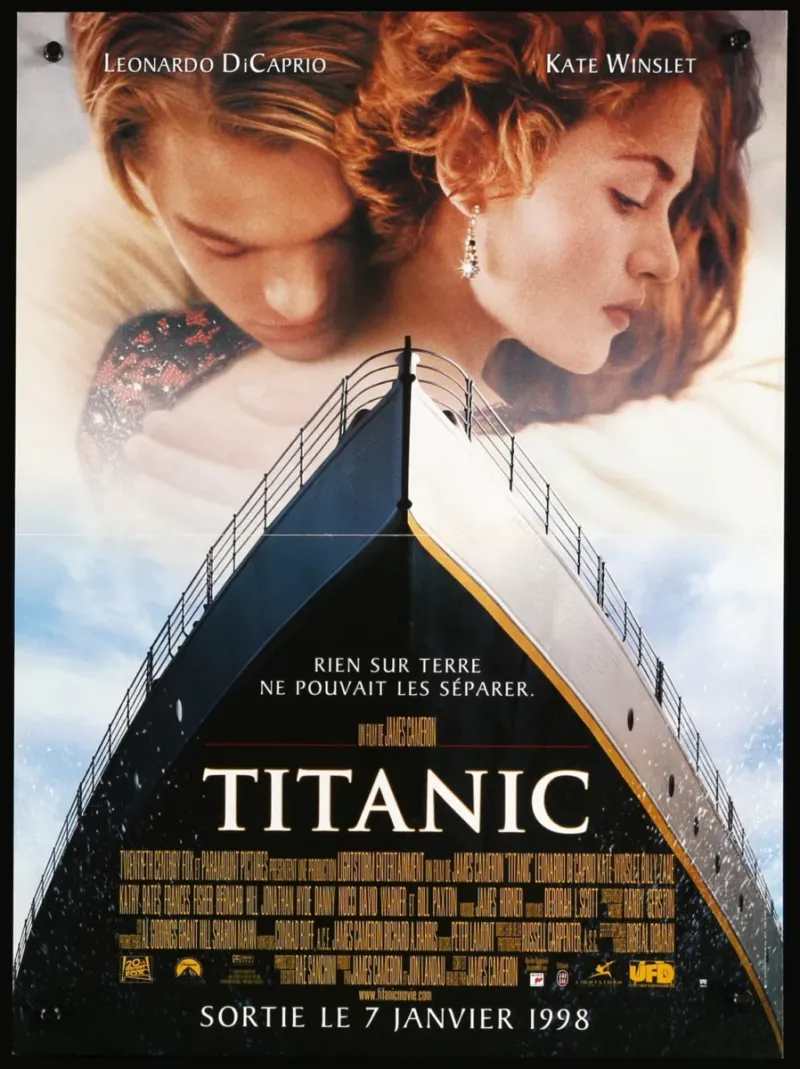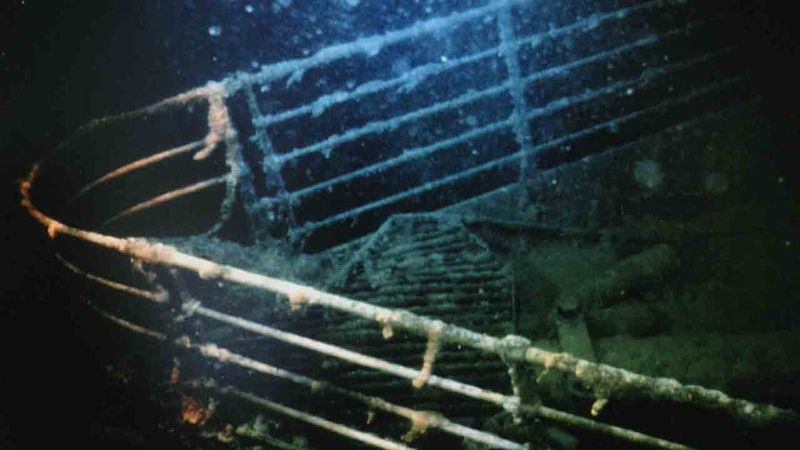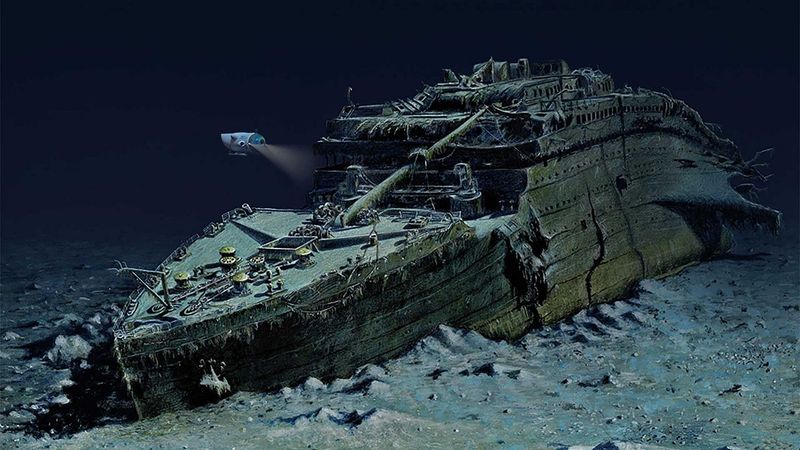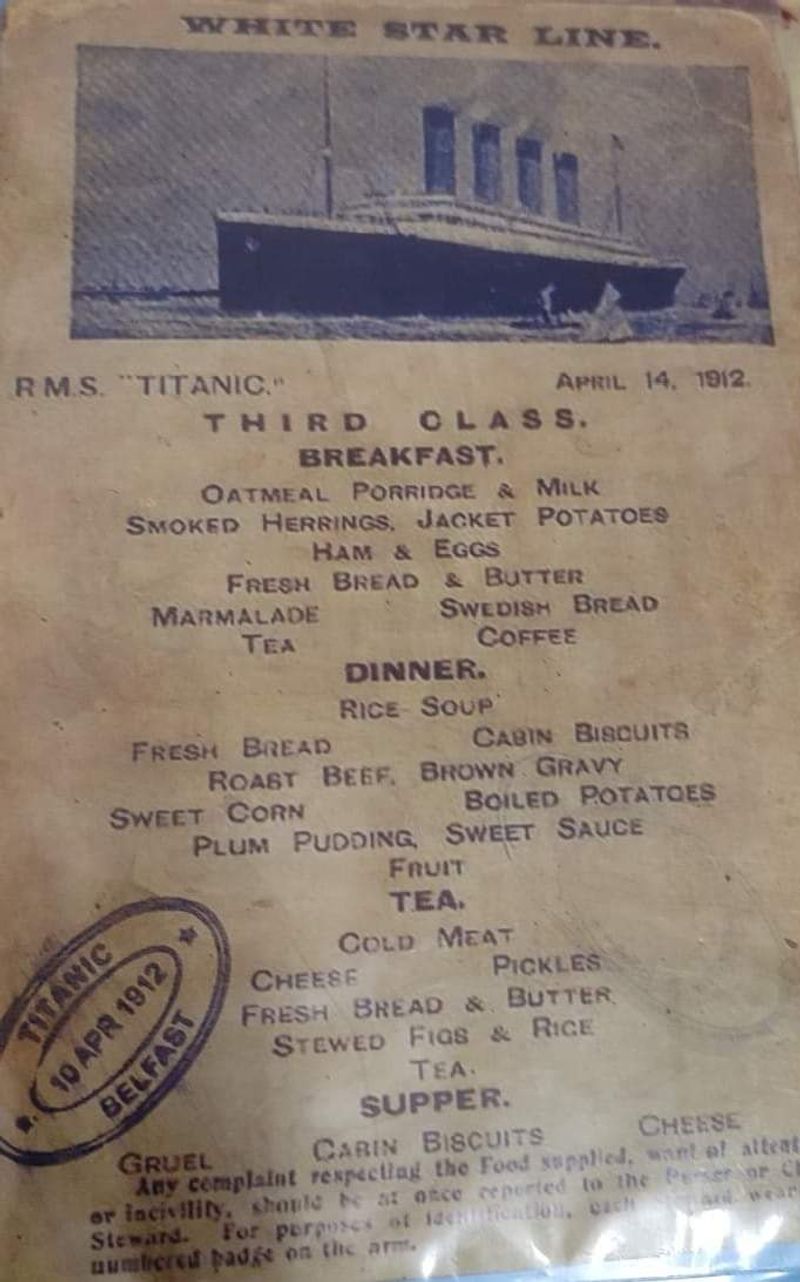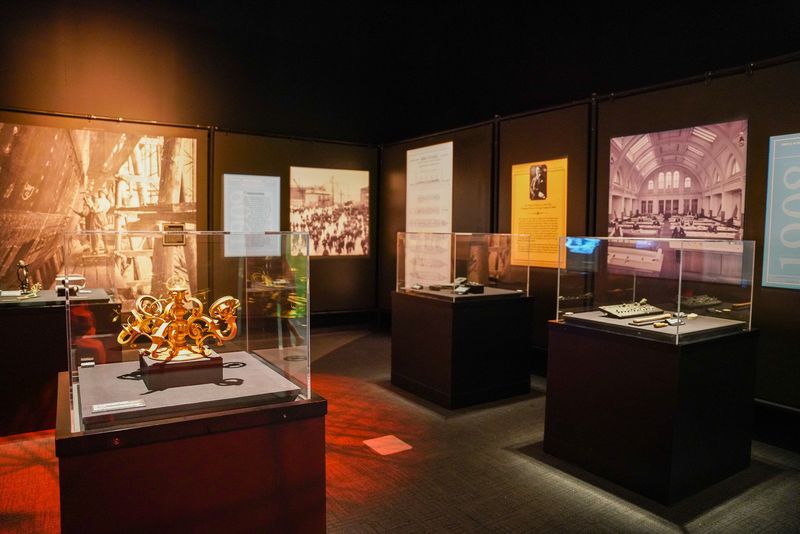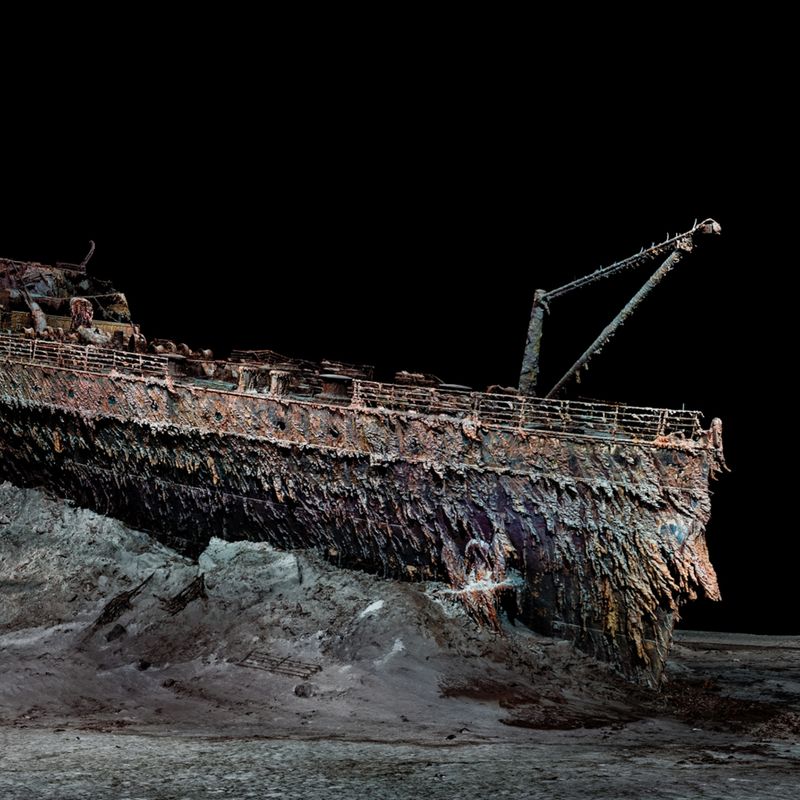The RMS Titanic, a marvel of early 20th-century engineering, remains one of the most infamous maritime disasters in history.
With its luxurious offerings and unprecedented size, the Titanic’s maiden voyage was tragically cut short, leading to a legacy that continues to captivate and educate.
1. Maiden Voyage & Construction
Crafted by Harland and Wolff in Belfast, the Titanic was a testament to human ingenuity. The sight of her launch in 1911 was nothing short of spectacular, with crowds gathering to witness the birth of a legend.
Her maiden voyage kicked off from Southampton on April 10, 1912, filled with excitement and anticipation. Passengers from all walks of life boarded, each one eager to experience the luxury promised onboard.
The ship embodied a powerful symbol of industrial achievement, standing as the epitome of opulence and design. However, destiny had other plans for this mighty vessel.
2. Unprecedented Size & Luxury
The Titanic was more than just a ship; it was an opulent floating palace. Measuring nearly 882 feet, she was the largest moving object of her time. The interiors dazzled with lavish first-class accommodations that rivaled the finest hotels.
Guests could indulge in a grand staircase, exquisite dining rooms, and a pool—unheard of at sea. Every detail, from the intricate woodwork to the fine china, spoke of luxury and advancement.
Despite its grandeur, the Titanic’s offerings were accessible only to those who could afford them, symbolizing a stark social divide.
3. The Iceberg Collision
On a bitterly cold April night, the Titanic’s fate was sealed. The ship cruised swiftly through the North Atlantic, unaware of the lurking danger. At 11:40 PM on April 14, 1912, tragedy struck—a collision with an iceberg.
The impact was more than the ship’s design could handle, resulting in a catastrophic breach. Panic ensued as the mighty vessel, once deemed unsinkable, began taking on water.
The enormity of the disaster unfolded under the stars, leaving crew and passengers in disbelief as their opulent journey transformed into a desperate fight for survival.
4. Rapid Sinking
In a mere three hours, the unthinkable happened—the Titanic sank. The collision’s aftermath was swift and unforgiving. As water poured in, the ship’s bow dipped precariously, sealing her fate.
Lifeboats were lowered, but chaos ruled, with many leaving half-full. Amidst the bitter cold and rising panic, the reality of the sinking set in. Survivors watched as the once-mighty liner vanished beneath the waves.
This rapid descent into the icy abyss became one of the deadliest maritime disasters, capturing headlines and hearts worldwide, forever marking the date, April 15, 1912.
5. Insufficient Lifeboats
The Titanic’s lifeboats became a symbol of tragedy. Despite her size and passenger count, the ship carried only 20 lifeboats—far fewer than needed. Regulations of the time dictated lifeboat numbers based on tonnage, not occupancy.
As a result, chaos and heartbreak ensued during the evacuation. Many boats launched half-empty, filled with those lucky enough to secure a spot amidst the confusion.
The lack of lifeboats exposed grave safety oversights, highlighting a failure in maritime protocol and resulting in a legacy that would prompt significant safety reforms in the years to follow.
6. Distress Calls & Communication
In the era of early wireless communication, Titanic’s distress calls remain a poignant reminder of the disaster’s scale. Operators Jack Phillips and Harold Bride tirelessly sent CQD and SOS signals into the night.
Despite their efforts, response was delayed, sealing many fates. Nearby ships either missed or misunderstood the calls, amplifying the tragedy.
The chaotic exchanges revealed the limitations of contemporary technology and maritime communication standards.
Their courageous attempts to summon help, although ultimately unsuccessful, underscored the critical need for continuous radio watch and clearer protocols in emergencies.
7. High Casualties
The Titanic disaster claimed over 1,500 lives, a staggering loss in peacetime maritime history. The ship’s sinking saw lifeboats filled with women and children first, adhering to the protocol of the time.
This rule, though noble, resulted in heartbreaking separations and skewed survival rates. Many men, including crew and male passengers, faced grim odds. The icy Atlantic waters proved merciless, claiming even those who managed to escape the ship.
The human toll of the tragedy underscored the urgent need for reform and left an indelible mark on the world, reshaping maritime safety laws.
8. Survivor Stories
Among the Titanic’s notable survivors was Margaret “Molly” Brown, who emerged as a beacon of resilience and courage. Dubbed “The Unsinkable Molly Brown,” her story captivated the world.
Known for her tenacity, she took charge during the evacuation, urging lifeboat occupants to return and save more lives. Her leadership and compassion became legendary, immortalizing her in history.
Brown’s life after the disaster was marked by philanthropy and advocacy, ensuring that those lost were not forgotten, and that lessons learned would guide future generations toward safer seas.
9. Aftermath & Inquiry
The Titanic disaster prompted a flurry of inquiries on both sides of the Atlantic. These investigations sought to uncover the truth behind the tragedy. Testimonies revealed shocking safety lapses and failures in communication.
Public outrage fueled a call for accountability and change. The hearings led to widespread recognition of the need for stricter maritime regulations.
The findings prompted an overhaul in safety standards, aiming to prevent a repeat of such a catastrophe. The inquiries highlighted the human cost of oversight, spurring reforms that reshaped the future of maritime travel.
10. Maritime Safety Reforms
In the wake of the Titanic disaster, sweeping reforms transformed maritime safety standards. The International Convention for the Safety of Life at Sea (SOLAS) emerged, mandating lifeboats for all passengers and continuous radio watch.
These changes addressed the failings exposed by the tragedy, setting a new precedent in maritime law. The disaster’s lessons were etched into policies that prioritized human life over prestige.
SOLAS remains a cornerstone of maritime safety, its enduring legacy a testament to those lost in the icy waters of the Atlantic, ensuring their sacrifices were not in vain.
11. Legacy in Popular Culture
The Titanic’s story has transcended time, becoming a cultural touchstone. Films like James Cameron’s 1997 blockbuster brought the tragedy to life for new generations, capturing imaginations worldwide.
The ship’s legacy is preserved in books, exhibitions, and documentaries, keeping the memory of that fateful voyage alive. These cultural expressions explore themes of human hubris and resilience, resonating across decades.
The Titanic’s tale serves as a compelling reminder of mortality and innovation’s dual nature. Its enduring allure reflects society’s fascination with the interplay of fate and human endeavor.
12. Discovery of the Wreck
The Titanic’s resting place was discovered in 1985 by an expedition led by Robert Ballard. Lying over 12,000 feet beneath the North Atlantic, the ship’s remains offered a haunting glimpse into the past.
The discovery ignited global interest, sparking debates on preservation versus exploration. The wreck’s study has provided invaluable insights into the ship’s final moments and structural failure.
These findings have enhanced understanding of early 20th-century shipbuilding, while honoring the memory of those lost. The site remains a solemn reminder of the ocean’s power and the human stories intertwined with its depths.
13. Economic Impact
The Titanic’s sinking extended beyond human loss, impacting the global economy. The disaster shook the insurance industry, resulting in significant payouts and reevaluations of maritime risk.
Shipping companies faced increased scrutiny and financial strain as public confidence wavered. The tragedy underscored the need for robust safety measures and comprehensive risk assessments.
As industries adapted, the Titanic’s legacy prompted a shift in shipbuilding practices and international commerce standards.
Its economic reverberations highlighted how a single event could reshape entire sectors, illustrating the intricate links between technological advancement and financial stability.
14. Class Divides & Social Impact
Stark class divides aboard the Titanic became glaringly apparent during the disaster. Survival rates varied significantly between first, second, and third-class passengers, highlighting societal hierarchies.
First-class passengers enjoyed greater access to lifeboats, while third-class faced barriers and confusion. This disparity prompted reflections on social inequality, exposing the harsh realities of class distinctions.
The tragedy served as a catalyst for change, encouraging shifts toward more egalitarian social structures. The Titanic’s story remains a powerful reminder of the need for compassion and equality, transcending its era to echo through contemporary social dialogues.
15. Artifacts & Relics
Artifacts from the Titanic wreckage offer tangible connections to the past. Thousands of items have been retrieved, from personal belongings to ship fragments.
These relics provide a poignant glimpse into life aboard the ill-fated liner, preserving stories of those who sailed her. Museums and exhibitions worldwide showcase these treasures, educating and moving visitors.
The artifacts serve as reminders of the tragedy’s human dimension, bridging the gap between history and memory. Their preservation raises debates on ethical stewardship, balancing exploration with respect for the site as a maritime grave.
16. Ongoing Research & Remembrance
The Titanic continues to captivate researchers and historians. Advances in underwater technology enable more detailed exploration of the wreck, providing fresh insights into the tragedy.
These efforts ensure that the lessons of the Titanic endure, informing current maritime safety practices. Commemorations and memorials honor the lives lost, offering solace and reflection.
The ship’s story is a testament to human resilience and the pursuit of knowledge, reminding us of the ocean’s majesty and mystery.
As research progresses, the Titanic remains a symbol of both loss and learning, guiding future generations toward safer voyages.
